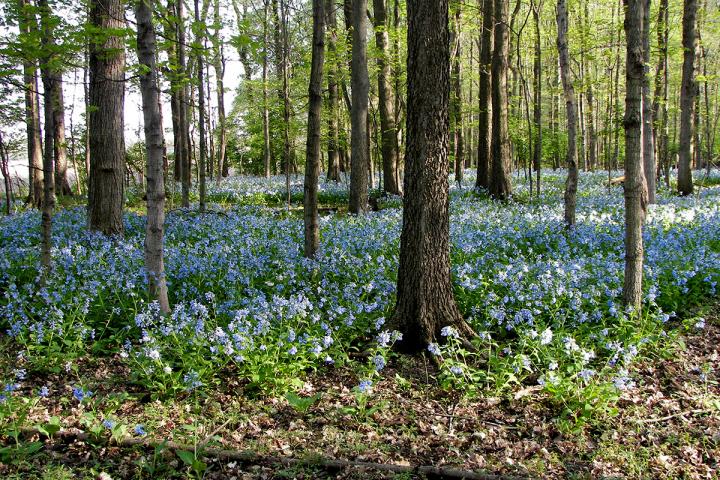One biologist made 600,000 observations over the course of the study

Credit: Photo by Steve Buck
CHAMPAIGN, Ill. — For 25 years, Carol Augspurger visited a patch of ancient woods near Urbana, Illinois to look at the same 25 one-square-meter plots of earth she first demarcated for study in 1993. She surveyed the plots once a week in spring and summer, tracking the major life events of each of the herbaceous plants that grew there. In fall, she visited every other week. In winter, once a month.
Over the course of her study, Augspurger made nearly 600,000 observations of 43 plant species in Trelease Woods, a 60.5-acre remnant of old-growth forest in central Illinois. She noted 10 distinct developmental stages in the plants’ lives, including when they emerged in spring, how long it took them to mature, when the flowers opened and died, when the leaves began to lose their greenness and when the plants went dormant. Augspurger is a professor emerita of plant biology at the University of Illinois at Urbana-Champaign.
By tracking these events and their relationship to average daily temperature and precipitation records, Augspurger and her colleague, Illinois Natural History Survey statistician and plant ecologist David Zaya, found that some shifts in the timing of plant seasonal life cycle events correlated with temperature trends.
The findings appear in the journal Ecological Monographs.
“We marked every major life cycle event in our plants from emergence until they went dormant,” Augspurger said. “And we did it for an intact community, a natural forest community.”
The analysis revealed that by the end of the study in 2017, the first spring plants were emerging almost four days later in March than they had in the early 1990s. But their growing seasons were getting shorter: Dormancy was occurring six days earlier. March average temperatures got slightly cooler over the same time period, but April temperatures were rising.
Plants that emerged in late spring – typically after April 1 – were undergoing even more dramatic shifts. Their growing seasons were lengthening: The period from emergence to dormancy lasted more than 40 days longer for these plants at the end of the study than at the beginning.
“For the early species, the growing season was a little bit shorter,” Zaya said. “But for the late species, the growing season was 20 days longer per decade.”
The duration of leaf expansion and flowering was shorter for the late-spring plants, while senescence, their period of aging, got longer. During senescence, plants gradually decline in making sugar and transfer their energy stores underground, but they do not produce new leaves, flowers or fruit. The increasing duration of senescence corresponded with higher average temperatures in the fall.
“It may be that the late-spring species are benefiting from changing temperature trends by being able to grow and get carbon for a longer period of time in the fall,” Zaya said. “This suggests that there may be winners and losers in the plant community as a result of climate change, where some plants can respond more, some can respond less.”
Many of the changes seen in the plants paralleled the temperature trends, but the researchers caution that the study does not prove that changing temperatures are driving the seasonal life cycle shifts in plants. Tying any specific trend in plants to climate change is tricky, Augspurger said.
“If you look at these 25 years of Illinois weather, climate change is not happening uniformly every month of the year,” she said. “The minimum temperatures are changing more than the maximums, for example, and March is not changing as much as May. It’s not only that the different plant species may respond in different ways to the changes, but the weather itself is changing differently.”
Regardless of the cause, the shifting patterns among plant species likely influence their interactions with herbivores, pollinators and each other, Augspurger said.
“What they do developmentally ultimately affects their ability to survive, grow and reproduce,” she said. “If they’re changing their period of activity, they’re either going to have a shorter or longer time to gain carbon, to absorb nutrients and to put it together into making flowers, seeds and offspring. This can affect species’ abundance and survival, and the health of the overall ecosystem.”
###
The INHS is a division of the Prairie Research Institute at the University of Illinois at Urbana-Champaign.
Editor’s notes:
To reach Carol Augspurger, call 217-333-1298; email [email protected].
To reach David Zaya, email [email protected].
The paper “Concordance of long-term shifts with climate warming varies among phenological events and herbaceous species” is available online and from the U. of I. News Bureau
Media Contact
Diana Yates
[email protected]
Original Source
https:/
Related Journal Article
http://dx.




